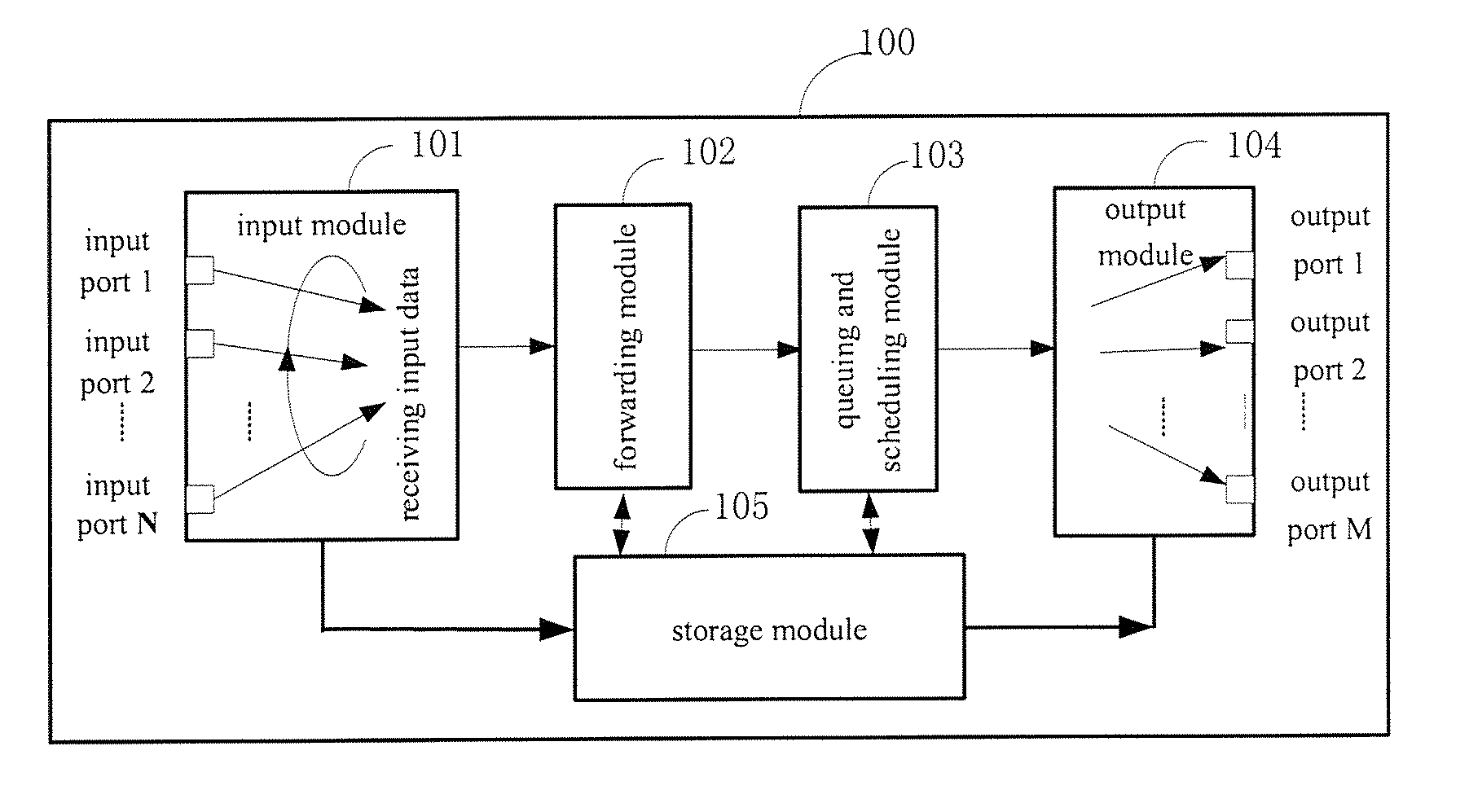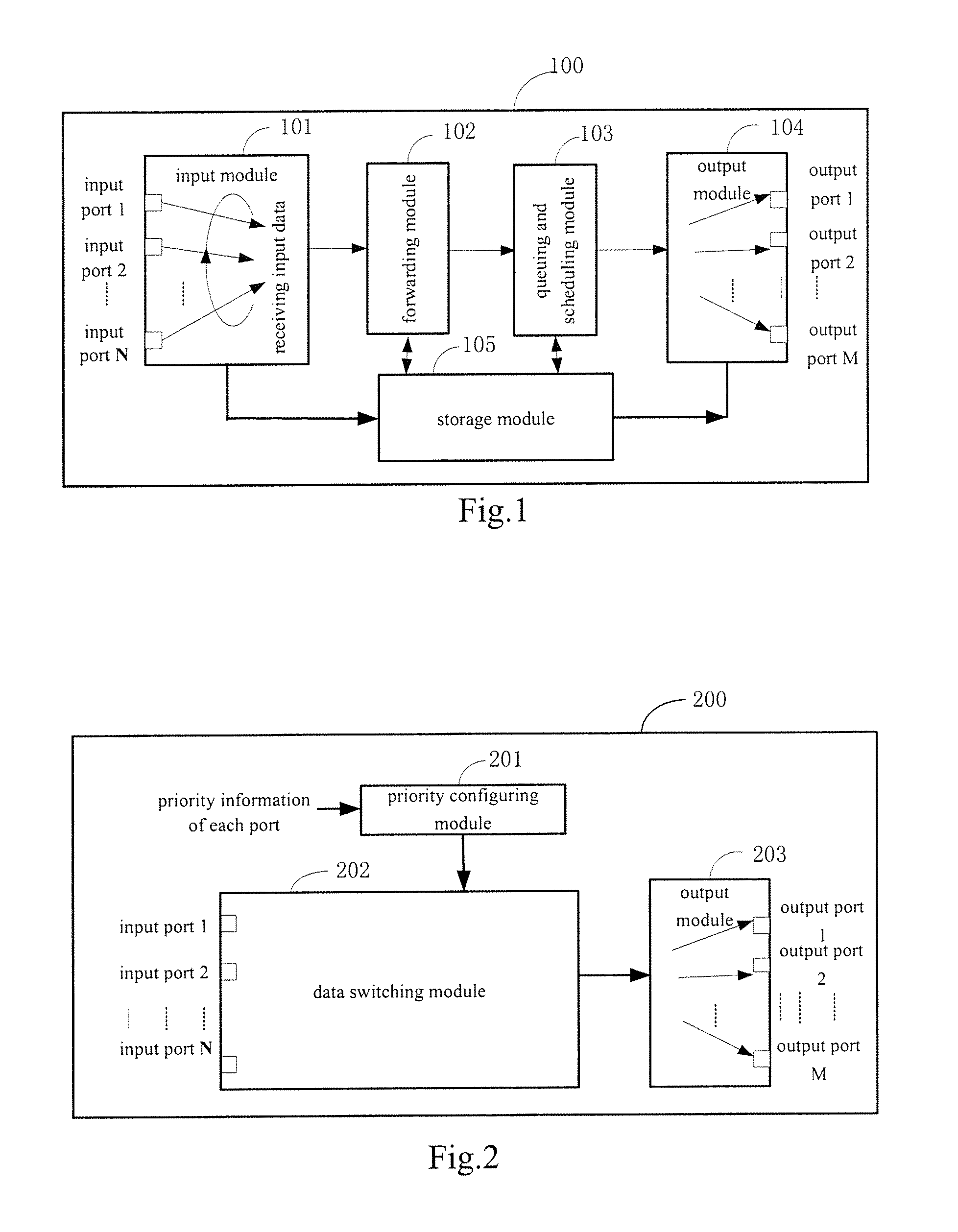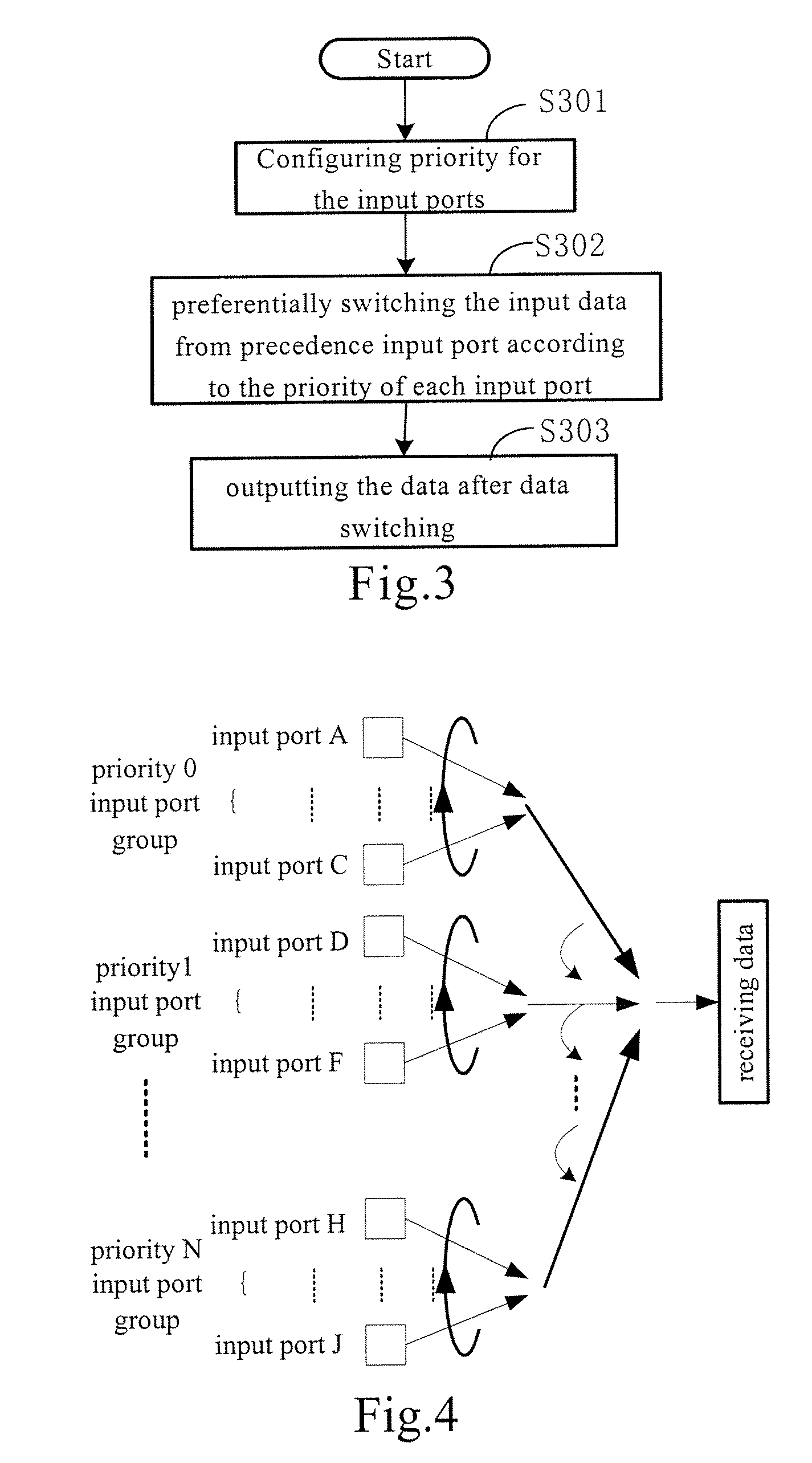Method and device for processing network data
a network data and processing technology, applied in the field of network communication technology, can solve the problems of data jam or loss, delay and increase the loss rate of packet data, and narrow bandwidth of ports, so as to improve the quality of service and allocate the resources of the network devi
- Summary
- Abstract
- Description
- Claims
- Application Information
AI Technical Summary
Benefits of technology
Problems solved by technology
Method used
Image
Examples
embodiment 1
[0053]FIG. 4 shows the principle for receiving input data from at least one input port according to an embodiment of the invention.
[0054]The input ports are divided into a precedence input port group and a normal input port group, and a port group may contain only one port. There may be a configurable parameter or register in the system, which is adapted to define which port belongs to the precedence input port group (and define the precedence sequence among the precedence ports or define whether there is a sequence or not) and which belongs to the normal input port group. The priority of the port may also be indicated by its port number (for example, port 0 indicates the port with a highest priority). The system may have an enable parameter or a register for configuring whether the priority of the ports need to be differentiated.
[0055]When no port belongs to the precedence group or the function of differentiating the priority of the input port is not enabled, only the polling metho...
embodiment 2
[0063]FIG. 6, FIG. 7 and FIG. 8 illustrate the principle for performing queuing and scheduling according to an embodiment of the invention.
[0064]In the queuing and scheduling unit, a precedence output queue group is added in addition to the existing normal output queue group, in order to make the data from the precedence input port or precedence input port group queue up. Each queue of the precedence output queue group may correspond to just one precedence input port, or may correspond to a plurality of precedence input ports, or may even correspond to all of the precedence input ports (at this point, the precedence output queue group includes only one precedence output queue). There may be a set of configurable parameters or registers (the settings from the input unit may also be re-used instead) for defining the data from which input port may queue in the precedence output queue (and for defining the precedence sequence of the precedence output queues or defining whether there is ...
PUM
 Login to View More
Login to View More Abstract
Description
Claims
Application Information
 Login to View More
Login to View More - R&D
- Intellectual Property
- Life Sciences
- Materials
- Tech Scout
- Unparalleled Data Quality
- Higher Quality Content
- 60% Fewer Hallucinations
Browse by: Latest US Patents, China's latest patents, Technical Efficacy Thesaurus, Application Domain, Technology Topic, Popular Technical Reports.
© 2025 PatSnap. All rights reserved.Legal|Privacy policy|Modern Slavery Act Transparency Statement|Sitemap|About US| Contact US: help@patsnap.com



